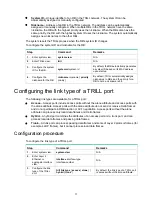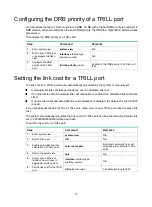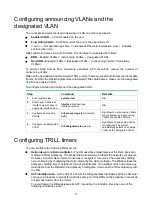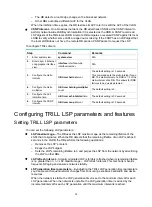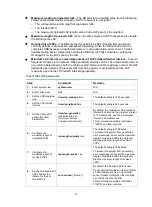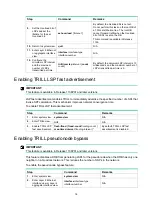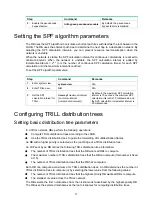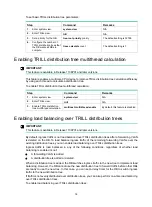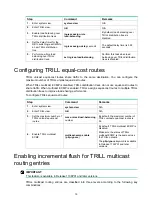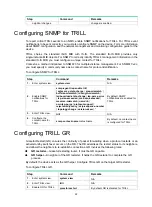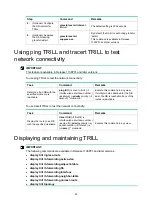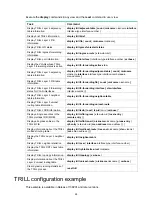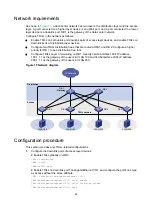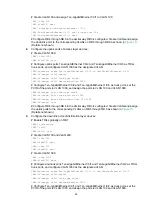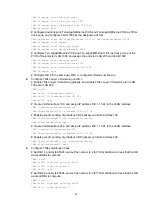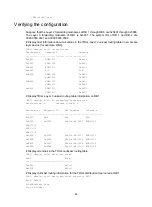
13
Configuring announcing VLANs and the
designated VLAN
The concepts and symbols used to describe a VLAN on port are as follows:
•
Enabled
VLAN
—A VLAN enabled on the port.
•
Forwarding
VLAN
—A VLAN for which the port is the appointed port.
•
∩
and
∪
—Set operation symbols.
∩
indicates set-theoretic intersection, and
∪
indicates
set-theoretic union.
RBs send Hello frames in a set of VLANs. The VLAN set is calculated as follows:
•
DRB
—Enabled VLANs
∩
(announcing VLANs
∪
designated VLAN).
•
Non-DRB
—Enabled VLANs
∩
(designated VLAN
∪
(announcing VLANs
∩
forwarding
VLANs)).
To prevent Hello frames from consuming excessive CPU resources, reduce the number of
announcing VLANs.
RBs use the designated VLAN to forward TRILL protocol frames (except Hello frames) and local data
frames. For RBs to establish adjacencies and forward TRILL data frames, make sure the designated
VLAN is an enabled VLAN.
To configure announcing VLANs and the designated VLAN:
Step Command Remarks
1.
Enter system view.
system-view
N/A
2.
Enter Layer 2 Ethernet
interface view or Layer 2
aggregate interface view.
interface
interface-type
interface-number
N/A
3.
Configure announcing
VLANs.
trill
announcing-vlan
{
vlan-list
|
null
}
By default, no announcing VLANs
are configured, and announcing
VLANs are enabled VLANs.
4.
Configure the designated
VLAN.
trill
designated-vlan
vlan-id
By default, no designated VLAN
is configured. The system
automatically selects an enabled
VLAN as the designated VLAN.
Configuring TRILL timers
You can configure the following TRILL timers:
•
Hello
interval
and
Hello multiplier
—The RB advertises Hello frames at the Hello interval to
maintain a TRILL adjacency. The shorter the Hello interval, the faster the network convergence.
However, a shorter Hello interval consumes more system resources. The adjacency holding
time is obtained by multiplying the Hello interval by the Hello multiplier. The RB advertises the
adjacency holding time to neighbors through Hello frames. If a neighbor does not receive any
Hello frame from the RB within the adjacency holding time, it removes the TRILL adjacency with
the RB.
•
AVF inhibition time
—As the AVF of a VLAN, the RB guarantees that frames of the VLAN enter
and leave a broadcast network through the same port. Other RBs on the broadcast network do
not process frames from the VLAN.
To avoid loops, the RB suppresses its AVF role during the inhibition time when one of the
following conditions exists:













